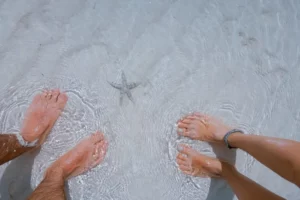Part 3: Heel pain: Heel spurs…. Cause or consequence?
Over the many years I’ve been treating patients, I still find it amazing how many names are used to describe Plantar Fasciitis.
Maybe it’s due to the variety of medical sources available on the internet or simply that old terms that people are more familiar with have stuck. Either way, I would like to clear up any confusion.
So, Plantar fasciitis is latin for “inflammation of the sole” of the foot and is synonymous with the terms policeman’s heel, heel spur syndrome, runner’s heel and calcaneal spurs. To add to the confusion, in recent years researchers, scientists and Podiatrists etc have debated the inflammatory (iitis) component of the condition and have since adopted the terms Plantar Fasciopathy and Plantar Fasciosis, suggesting that it is more degenerative in nature as opposed to inflammatory.
This is important with regard to what treatment approach is adopted as certain therapies and regimens that target inflammation may be relatively ineffective in resolving a condition which is believed to be more degenerative in nature!
I often get presented with xrays which show whopping heel spurs protruding from the heel bone and it’s no wonder that these bony tusks are assumed to be the cause of plantar fasciopathy. However, the evidence is conflicting for a number of reasons.
Firstly, a person can have a heel spur and not present with any heel pain symptoms.
Secondly there is evidence that bone that is placed under repetitive load responds by laying down more bone and where there is injury present there is also an increase in bone production. So, in the case of a runner who has long standing plantar fasciopathy, it may be that over time the heel has developed a spur in response to this as opposed to visa versa!
Thirdly, there are people with chronic cases of plantar fasciopathy that don’t have heel spurs on x ray!
Finally, surgery to remove the heel spur does not yield a great success rate in resolving symptoms of plantar fasciopathy and many people get better with non surgical treatments despite having heel spurs!
So the jury is out on this one. However, from my experience an x ray showing a heel spur should be used as a piece of evidence in the person’s wider case history when forming a diagnosis and treatment plan as opposed to determining a particular course of action. I’ve also had cases in the past where a heel spur turned out the be a red herring and the patient was diagnosed with a completely different condition. Another reason why an x-ray report should never be taken at face value without a full medical history and physical evaluation!
“I am an Advanced Musculoskeletal Podiatrist with special interests in extracorporeal shockwave therapy, video gait analysis and lower limb tendon and fascia injuries. I provide consultancy services to Electromedical Systems on their extracorporeal shock wave machines and am the UK trainer for the Optogait video gait analysis system for Algeos Ltd. My experience extends to providing specialist consultancy and management of lower limb conditions to elite and professional athletes, military personnel, recreational sports people and the general population. My purpose is to improve my patient’s’ quality of life and get them back to achieving their goals whether it’s walking the dog, getting through a compulsory fitness test, running a marathon or competing in an international event.” Emily Ball, Clinical Director, Active Step Healthcare Ltd.
Active Step Podiatry is based in Whiteley, Hampshire covering Fareham, Southampton & Portsmouth.



